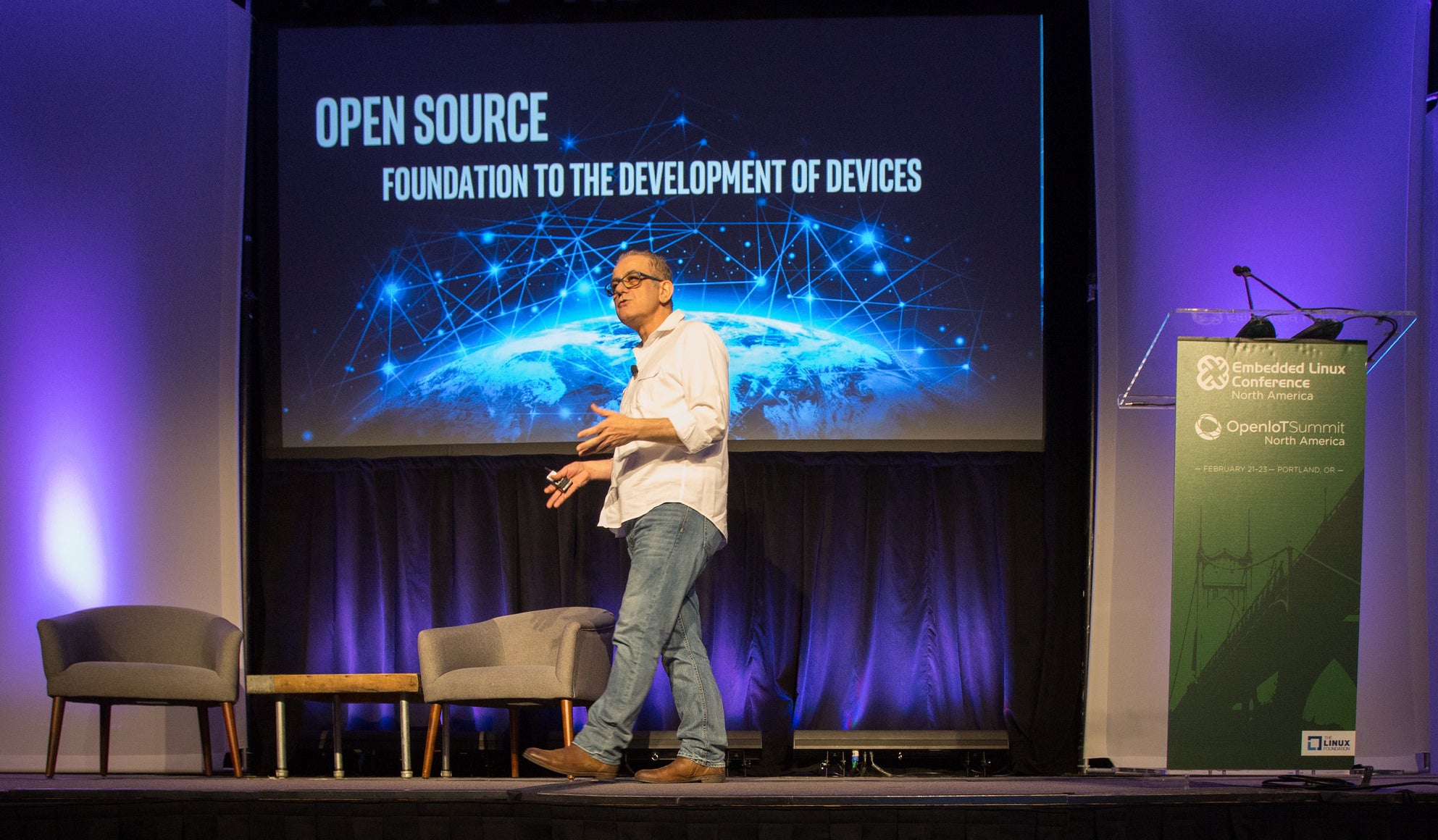This article was sponsored by Intel and written by Linux.com.
This year’s Open Source Summit Europe (formerly LinuxCon) took place in Prague. The conference is part of a series of annual events that are always popular in the open source community, and the lineup featured many different tracks, reflecting the upsurge in the number of open source projects and adoptions. One of the more popular topics there was edge computing and IoT.
Earlier we spoke with Imad Sousou, vice president of the Software and Services Group and general manager of the Open Source Technology Center at Intel Corporation. about his thoughts on edge computing. Following Open Source Summit Europe, we spoke with Sousou again to learn more about the future of edge networks and the new technologies needed to handle the demands of the growing number of connected devices.
Linux.com: Earlier, you talked about pushing intelligence to the edge of the network. What benefits does edge computing offer?
Sousou: Billions of new connected devices are creating and collecting data that needs to be processed. Imagine if all that processing takes place in the cloud. The network would very quickly get overwhelmed, regardless of how powerful it is. We will run into issues with network congestion and latency. With edge computing, we push some processing closer to the devices to help eliminate the latency and congestion problems, and improve performance of the applications running on those devices. This is a bit of an oversimplification, but you can see the benefit. Another advantage has to do with the availability of services on devices. Because slow response time and outages are unacceptable, if you move the computation as close to the device or even on the device, we can improve availability.
Linux.com: What is driving this move to the edge? Why does it matter?
Sousou: That’s a great question. You can boil it down to four key reasons. The first reason is speed. I touched on this before, but edge computing reduces latency because data doesn’t have to travel over a network to a remote data center or the cloud for processing. The second reason is security. We could see improved security at the edge because the data stays closer to where it was created. The third is related to scalability. Edge computing is fundamentally ‘distributed computing,’ meaning it improves the resiliency, reduces network load, and is easier to scale. And finally, it matters because it lowers cost. Data transmission costs are lower because the amount of data transferred back to a central location for storage is reduced.
Linux.com: What kinds of technologies are needed to make edge computing successful?
Sousou: At Intel, we think applying current cloud technologies for use at the edge is the right approach. For example, we can use existing cloud container solutions such as Intel Clear Containers. Today, applications at the edge run on bare metal. This creates security concerns if an application gets compromised. With Intel Clear Containers, we can provide hardware-based isolation with virtualization technology. If the application controlling your device gets hacked, your application will still be safe and other applications won’t be able to read/write your memory or data packets.
That is just one example. Of course we’ll innovate to address new use cases. We can use advancements in machine learning and artificial intelligence at the edge. It will really be a mix of new and existing technologies that will deliver edge computing.
Linux.com: You mentioned artificial intelligence and machine learning. Can you provide more detail on how that relates to edge computing?
Sousou: With the access and amount of data being generated, it’s becoming more important for edge devices to know what data is relevant and what isn’t. Devices must be more than smart. They must also to be powerful enough to both train themselves and infer direction on the same small device or within a sensor. New artificial intelligence and machine learning technologies are making this possible. Machine learning algorithms that connect multiple points of input require powerful processing that support the data movement needed to best take advantage of information. At Intel, we want to ensure machine learning frameworks are optimized on Intel architecture.
Linux.com: How does 5G wireless technology help enable edge computing?
Sousou: 5G networks support growing data rates, the increasing number of terminals, the need for higher service availability, and the desire for enhanced edge network coverage. To support new use cases, the new standard has identified three primary requirements: massive machine-to-machine (M2M) communications for Internet of Things (IoT) applications, ultra-low latency enabling life-saving car-to-car connectivity, for example, and gigabit speeds (high-bandwidth mobile broadband). No single wireless technology will meet these characteristics, so 5G goes beyond a single air interface and will be defined by a heterogeneous network that integrates 5G, 4G, Wi-Fi, and other wireless technologies.
Linux.com: We have heard a bit about time-sensitive networking (TSN). Can you explain what it is and how it relates to the edge?
Sousou: Intel has invested in time-sensitive networking for more than 5 years. TSN is a set of technologies that allows a network to deliver low-latency or guaranteed bandwidth to applications that require it while simultaneously supporting other less demanding applications. TSN uses packet prioritization, filtering, and network virtualization to support edge compute use cases on existing networking infrastructure. There are examples of uses in industrial infrastructures, autonomous devices, data centers, and communications infrastructures where the open implementations of core TSN infrastructure will help companies lower costs, make things easier to maintain, and provide the scale and accessibility needed for broad market acceleration and adoption. We are working with the industry, including groups like the Avnu Alliance, to deliver a maintainable, deterministic, open source network stack and associated hardware that can provide a coordinated time synchronization from cloud to fog to the edge.
Linux.com: Is there anything else that you would like to share with readers that we haven’t already covered?
Sousou: There is a lot of excitement about this connected world. It has the potential to change how we create, consume, and take advantage of information and could radically change how we live. Open source software is front and center in driving this change and provides the foundation for making edge computing a reality. I look forward to continuing to work with the community to innovate and help achieve a safer, smarter world.



